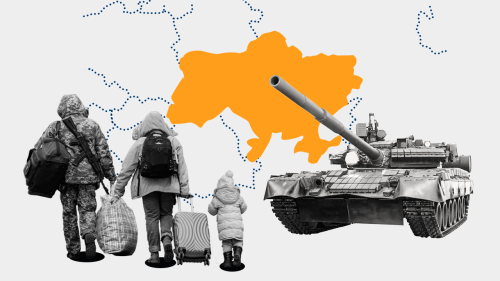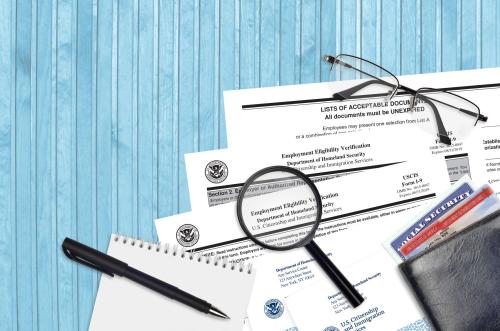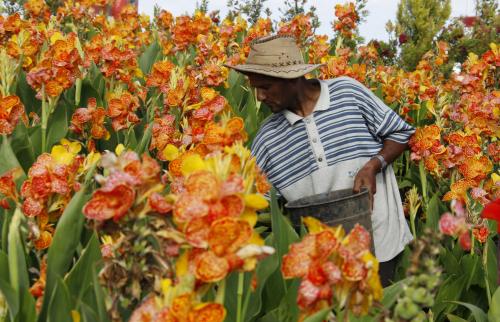In Colombia today, there are between 2 and 3 million internally displaced persons (IDPs) uprooted from their homes by the longstanding armed conflict. Disproportionately affected are Colombians of African descent and indigenous persons. In recent months, thousands more have been forcibly displaced and the risks to their physical security and survival have increased dramatically. The United States Congress is to be commended for shining a spotlight on their plight, which has not received the attention it should either from the Colombian Government or the international community.
Because indigenous persons and Afro-Colombians have a special historical attachment to the land they inhabit, displacement is particularly disruptive and traumatic for them, cutting them off from their source of livelihood and undermining their cultural identity. Despite their having been granted collective land title, they are especially vulnerable to being pushed off their land, which is coveted by armed groups for the cultivation of African palm and other lucrative crops, including coca. Moreover, once displaced, these already marginalized groups face further discrimination, including in gaining access to protection and assistance. In several localities, these groups have formed “peace communities”, declaring their neutrality in the conflict and asserting their entitlement to protection as civilians. This bold initiative, however, has not ensured their communities’ protection against targeted attacks by the armed actors.1 In short, indigenous and Afro-Colombian persons in Colombia are under tremendous threat and in urgent need of national as well as international protection and assistance. In the absence of more effective responses, the UN High Commissioner for Refugees recently has warned that several indigenous groups in Colombia could risk being altogether “wiped out”.
At a regional seminar on internal displacement hosted last year by the Government of Mexico, and in which the Government of Colombia participated, the situation of internal displacement in Colombia and its particularly devastating impact on indigenous and Afro-Colombian communities was a central and grave concern. A Framework for Action adopted by the meeting identified key steps to be taken by governments in the region in responding to internal displacement. These include recommendations for: non-discrimination in the national response; promoting solidarity with the displaced, including with indigenous and Afro-Colombian IDPs; ensuring the security of IDP communities and their leaders; addressing the climate of impunity; supporting durable solutions to internal displacement, in particular the voluntary return or resettlement of IDPs in conditions of safety and dignity; and restoring land to indigenous and ethnic minorities as a means not only of ensuring their livelihood and preserving their cultural heritage but also redressing long-standing discrimination and injustices. The Framework, which is being widely disseminated in the Americas, provides benchmarks for holding the Government of Colombia accountable. This document is submitted for the record.
The Mexico City meeting also called for the wide dissemination and application of the Guiding Principles on Internal Displacement. These Principles are considered a standard by the United Nations. Based on international human rights and humanitarian law, these 30 principles set forth the rights of internally displaced persons and the responsibilities of governments, insurgent forces and other actors towards them. Particular attention is paid in the Principles to the specific protection and assistance needs of indigenous persons and ethnic minorities. It is noteworthy that the Constitutional Court of Colombia, the highest court, has recognized that the national response to internal displacement should abide by the Guiding Principles. The US Agency for International Development (USAID), in its policy on internally displaced persons, also highlights the Guiding Principles as a useful tool and framework for dealing with internal displacement, the use of which is to be promoted in countries experiencing internal displacement. Encouraging the Colombian Government to respect the Guiding Principles on Internal Displacement would therefore be consistent with both Colombian and United States policy.
In addition, the Brookings-Bern Project puts forth the following five key recommendations to the United States Government:
First, it is urgent for the United States to press upon the Government of Colombia to ensure the protection of IDP leaders. They face acute threats to their physical security, including deliberate killings and disappearances. AFRODES, an association of Afro-Colombian IDPs, has had a member of its regional advisory council killed and in 2003 its founder had to flee the country to escape risks to his life. In the first four months of 2005, more than 20 indigenous leaders were murdered. IDPs and their leaders must be able to advocate for their rights without risk of punishment or harm. The United States should continue funding the human rights protection program through the Ministry of the Interior, which provides security measures for individuals at risk. According to USAID, this program to date has provided protective measures to over 3,700 persons at risk.2 The United States should also press the Government of Colombia to do much more to address the prevailing climate of impunity and ensure that perpetrators of crimes against IDP leaders and against other human rights defenders are brought to justice.
Second, the United States should press upon the Government of Colombia the need for an effective early warning mechanism to protect civilian populations against attack and displacement. In Colombia, displacement and attacks upon communities often are forewarned, a pattern which underscores the deliberate nature of the violence against civilians. It also, however, provides the opportunity for a protective response. With substantial assistance from the United States, the Colombian Government has put in place an early warning system. However, it does not work well. Alerts reportedly get stuck in bureaucracy although they are supposed to be acted upon speedily by the government and military. The consequences are serious. In 2002, when no action was taken on an early warning alert, more than a hundred Afro-Colombian IDPs sheltering in a church at Bojayá were killed.
Third, the United States should urge and support greater United Nations presence among communities at risk. In Colombia and elsewhere, international presence has been shown to be an important protection tool, helping to enhance the security of populations under threat and to prevent their displacement. An expanded field presence by the UN High Commissioner for Refugees as well as the Office of the UN High Commissioner for Human Rights among Afro-Colombian and indigenous populations at risk is very much needed.
Fourth, the Government of Colombia should be encouraged to respond positively to the request of the Representative of the United Nations Secretary-General on the Human Rights of Internally Displaced Persons to undertake a mission to Colombia. In the past, the Government of Colombia has been receptive to such dialogue, as evidenced by the missions to the country undertaken by the former Representative, Francis Deng, in 1994 and 1999. During his visits, Deng raised the plight of indigenous and Afro-Colombian displaced persons and made recommendations to improve their situation. The Government of Colombia must be reminded to implement these recommendations and those of other human rights mechanisms, including the UN Special Rapporteur on Indigenous People.
Fifth, the United States could do more to support indigenous and Afro-Colombian IDPs in having a say in the decisions that affect their lives. The exclusion of displaced persons from decision making only heightens their marginalization, increases their sense of helplessness and can even put their physical security at risk, particularly in the case of women. Effective consultation mechanisms are needed between IDPs and the Colombian Government, including in completing the land titling process for Afro-Colombians and ensuring full implementation of Law 70/93. IDPs also point to their need for more effective consultative mechanisms with local NGOs and with the United Nations. IDPs, after all, are best placed to identify their protection and assistance needs as well as what is required to address them. For the United States, Afro-Colombian organizations have recommended that a focal point be designated at the U.S. Embassy in Bogotà to open a channel for them to raise their particular concerns and also ensure that these are adequately reflected in the State Department annual human rights reports. Training and financial support to Afro-Colombian and indigenous IDP associations also should be expanded and given priority in civil society capacity building programs.
In conclusion, the carrying out of these recommendations could help increase protection of the human rights and physical security of Colombia’s indigenous and Afro-Colombian populations, whose grave situation warrants focused and sustained attention by the U.S. Government.
1The risks faced by these and other peace communities are evidenced by the February 2005 attack against the peace community in San José de Apartadó, in which eight people, among them women and children, were killed.
Back
2USAID/Colombia, Progress Report for the 4th quarter FY 2004, p. 15. See Blueprint for a New Colombia Policy, by the Latin America Working Group Education Fund, the Center for International Policy, the Washington Office on Latin America and the U.S. Office on Colombia (March 2005), p. 13.
Back



Commentary
TestimonyThe Human Rights Situation in Colombia: Afro-Colombians and Indigenous People
June 8, 2005